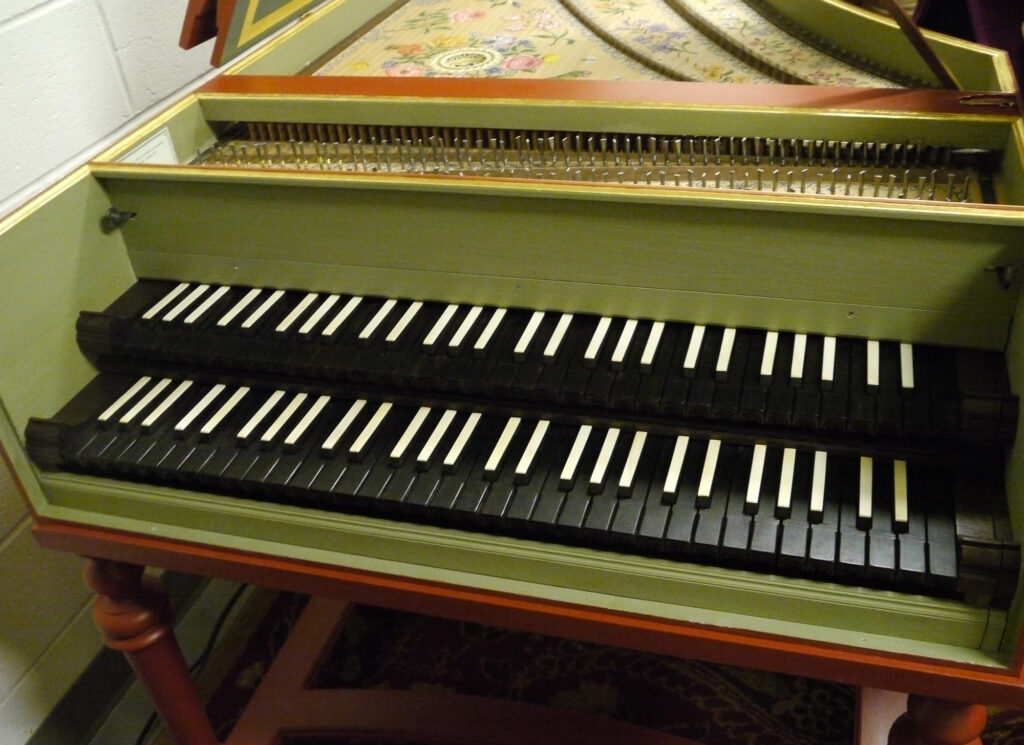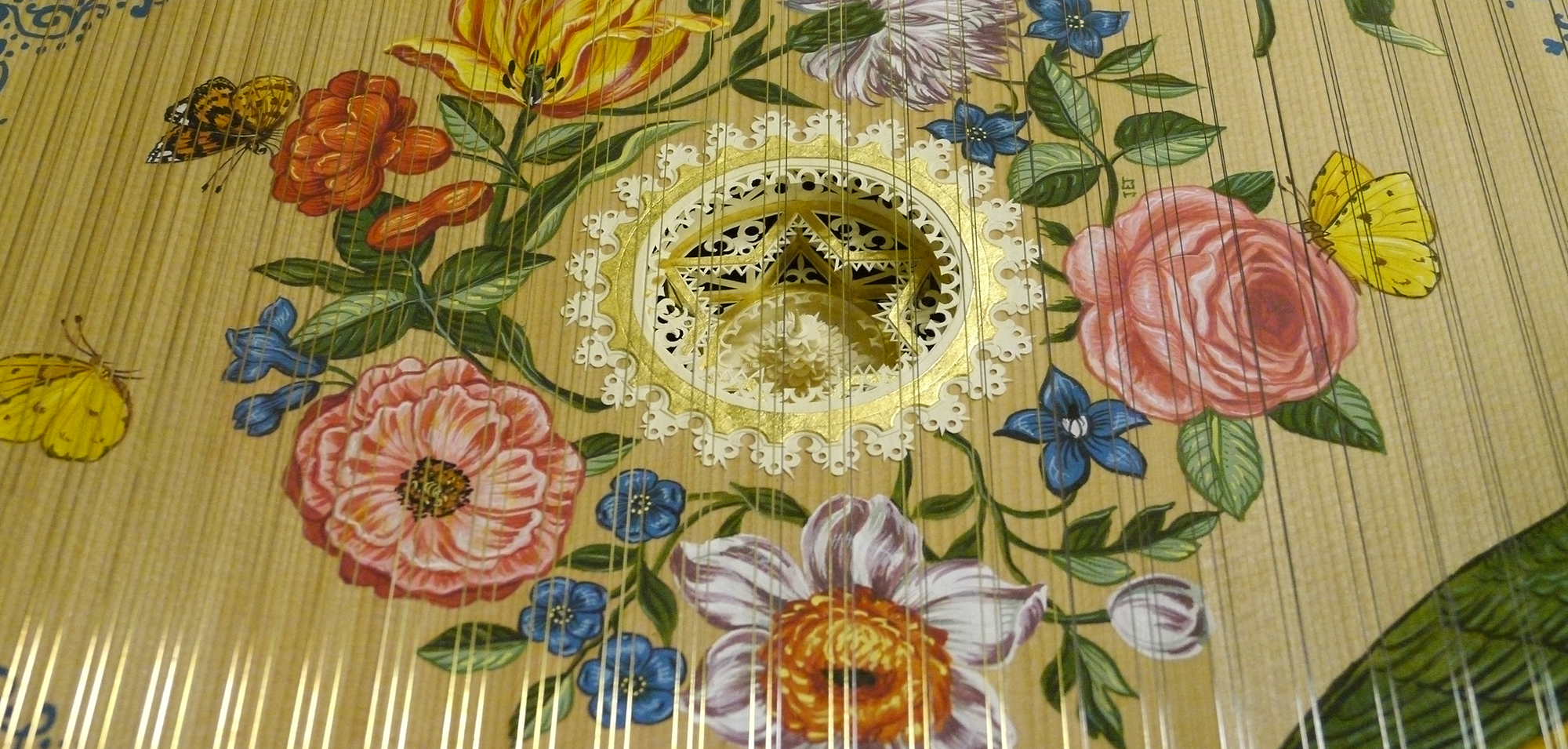As the ensemble Musica Spira, featuring UMBC affiliate artist and keyboardist Paula Maust and soprano Grace Srinivasan, steps onto the stage in Linehan Concert Hall on Wednesday, April 5, audience members will be treated to the sounds of a new custom-built harpsichord.
A keyboard instrument most popular in the Renaissance and Baroque eras, the harpsichord superficially resembles the piano. Its sound, however, is distinctive and more delicate, produced by plectrums that pluck its strings as the keys are depressed, rather than by hammers striking strings, as with a piano. The instrument is also visually remarkable. Harpsichords were often exquisitely painted and designed with elaborate ornamentation, and UMBC’s new acquisition is no exception.
The harpsichord is one of a number of instruments obtained by the department of music through the construction of the Performing Arts and Humanities Building, and has been designed and hand-built by Owen Daly, a maker of historically-informed harpsichords and clavichords in Salem, Oregon, since the late 1970s. Daly explains:
UMBC’s new instrument is closely modeled upon a harpsichord by Pierre Donzelague, made in Lyon, France, in 1711. The 1711 Donzelague is one of the earliest known harpsichords made with the five-octave range that later became standard for large French harpsichords, rather than representing the enlargement of an earlier instrument with a smaller range.
The elaborate ‘wedding-cake’ rose in the soundboard, and the extravagant floral soundboard painting were both closely modeled on those elements in the original Donzelague by Berkeley artist Janine Johnson.
As was the case with harpsichords in their original period, the plectra are made from the shafts of feathers, in this case those of wild Canada geese, and the wire is a newly-developed material based closely upon the metallurgy of surviving samples of original wire.
Musica Spira’s program will feature music by a variety of Baroque composers, including Henry Purcell (1659–1695), George Frideric Handel (1685–1759), Élisabeth Jacquet de la Guerre (1665–1729), Peter Philips (1560/61–1628), Joseph-Nicolas-Pancrace Royer (1705–1755), and Domenico Scarlatti (1685–1757).

Keyboardist Paula Maust shares:
The harpsichord is modeled on a French instrument, so a substantial portion of the music on the program is French. The Élisabeth Jacquet de la Guerre suite for solo harpsichord is from 1687, and we know that the composer was still giving recitals in Paris into the 1720s, so she may have played this music on a similar instrument. This suite is all about subtlety, nuance, and ‘good taste,’ and the new harpsichord works quite well for these pieces.
The Bourgeois cantata was written in 1708, so it is a close contemporary of the instrument UMBC’s new harpsichord was modeled on.
I’ve also chosen some later French pieces for solo harpsichord by Royer to demonstrate the instrument’s capacity for bombastic, loud, and virtuosic works (as a contrast to the Jacquet de la Guerre suite).
Each piece on the program was chosen to highlight the instrument’s various capabilities, for example to be loud and percussive, soft and sustained, to clearly showcase rapid passage work, and to produce and support lyric melodies.
Musica Spira performs in Earl and Darielle Linehan Concert Hall on Wednesday, April 5, at 7:30 p.m. (see additional event information).
Header image: The harpsichord’s painted soundboard and intricate woodwork. Both photos by Willie Santiago, concert coordinator.

